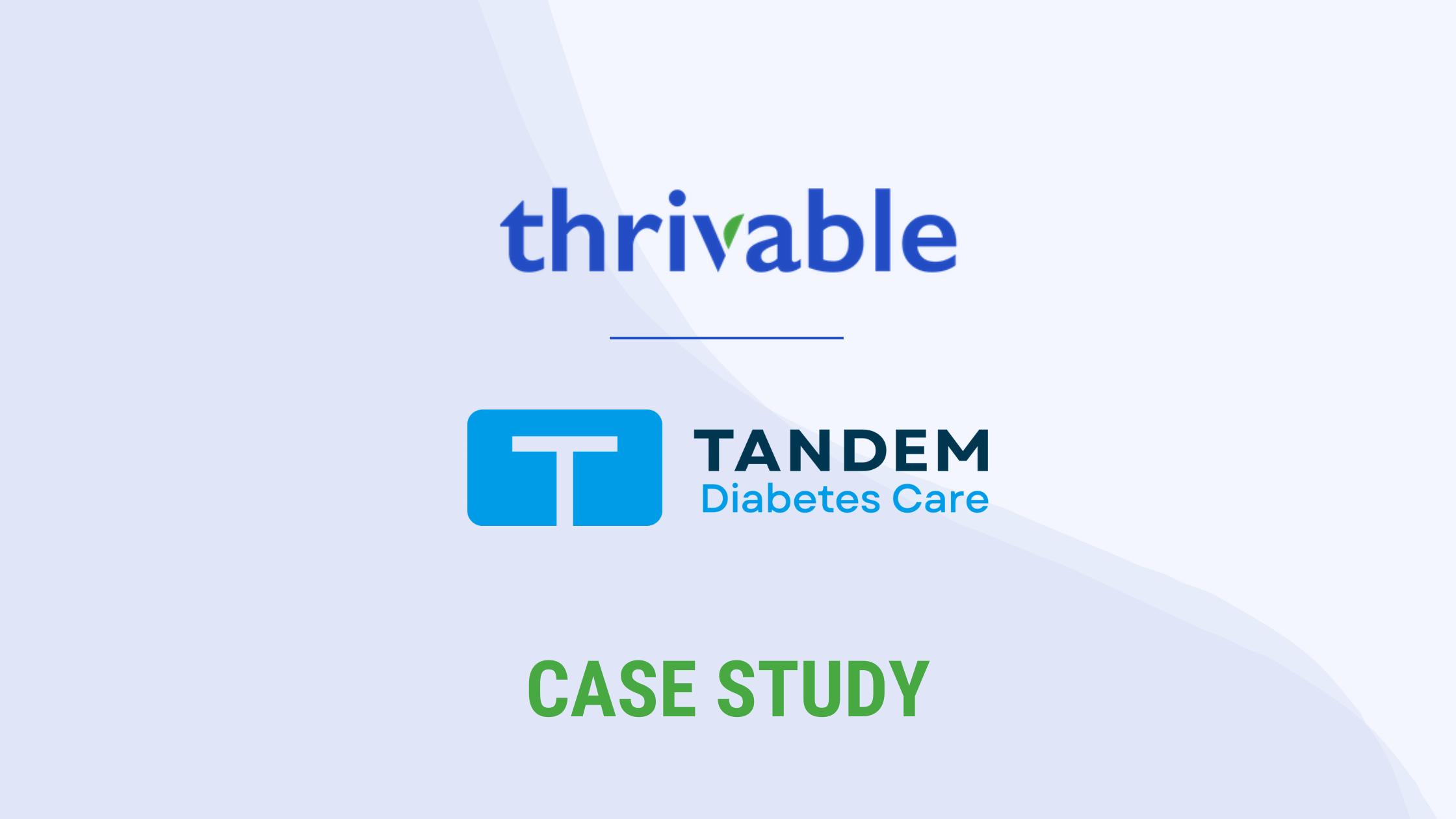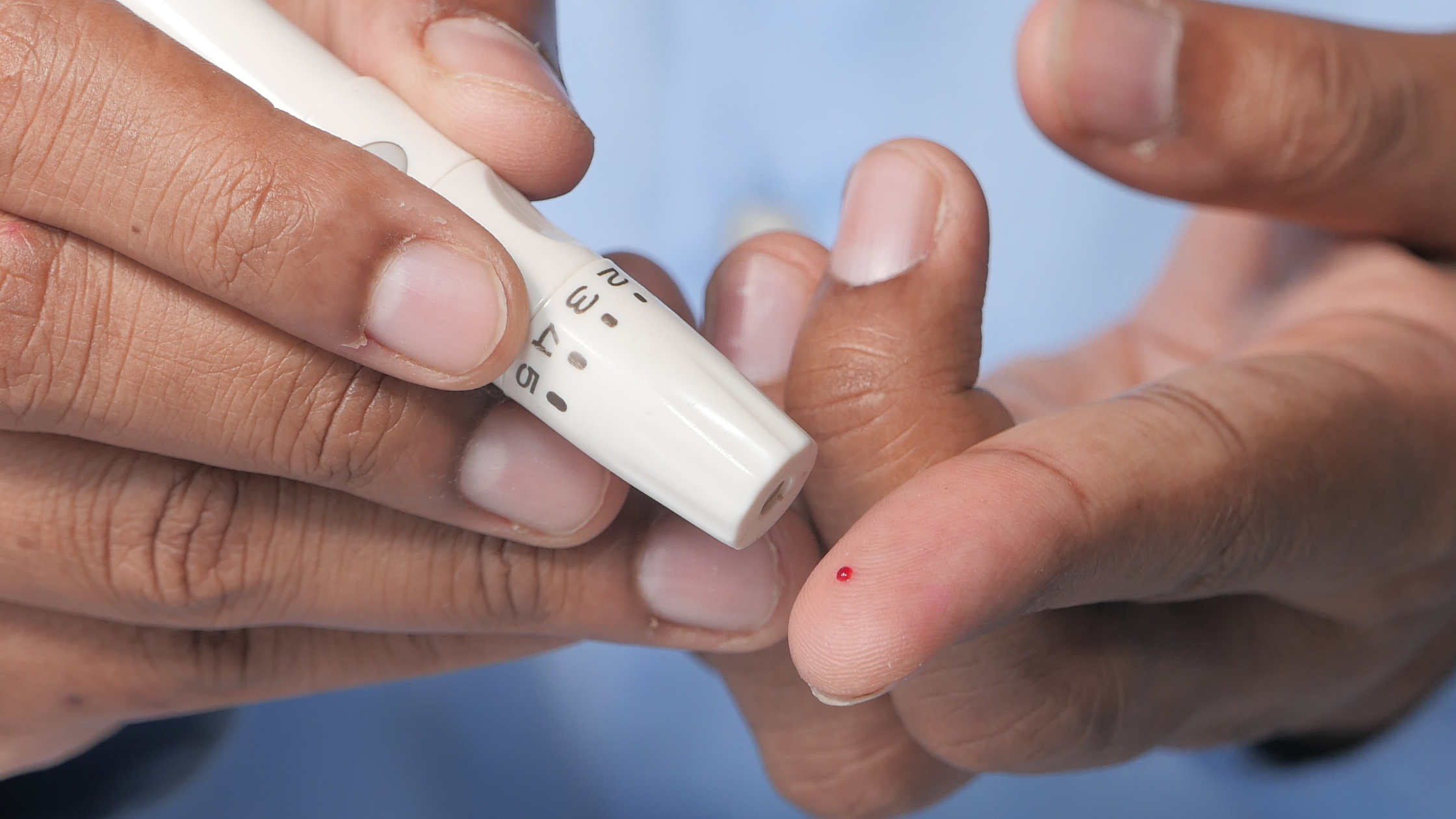Blog
Breaking Down Barriers: Why Are Only 31% of Type 2 Patients on GLP-1s?

Adam Zandman
Research Director
Industry Trends

GLP-1 receptor agonists such as Ozempic, Wegovy, and Mounjaro are transforming the care of type 2 diabetes. With benefits that go beyond glucose control, including weight loss and cardiovascular protection, these therapies are drawing huge attention. But high interest doesn’t equal easy access.
Thrivable’s research reveals a complex story: 31% of respondents with type 2 Diabetes are currently using a GLP-1, and another 33% have tried one or are considering it. Yet despite this momentum, access barriers persist. Many patients who want these medications never start or stop prematurely.
This blog explores the three major roadblocks holding patients back: cost, education gaps, and real-world challenges like side effects and delivery methods. All insights are grounded in data from Thrivable's proprietary panel, which includes diverse, real-world patient experiences. As part of our Findings Friday research, we connect directly with a highly engaged audience of patients and healthcare professionals. This connection allows us to provide a unique, actionable perspective, directly informed by the experiences of those navigating the barriers to GLP-1 access.
Barrier 1: Cost and Coverage
High out-of-pocket costs and inconsistent insurance coverage remain the biggest barriers.
Most GLP-1s cost over $1,000 per month. Even insured patients struggle, with approximately 50% stating that affordability is a challenge, and 19% of insured users reporting that they pay the full cost (KFF Health Tracking Poll, May 2024). Thrivable’s panel reflects this pain: patients regularly cite coverage denials, high copays, or formulary restrictions as reasons they haven’t started a GLP-1.
Clinicians agree; 85% of healthcare professionals (HCPs) say that cost or coverage issues are a top reason patients discontinue therapy. The takeaway: affordability limits reach, even for the most promising therapies.
Recent changes in insurance coverage, such as CVS Caremark’s decision to halt coverage of certain GLP-1 medications, add another layer of complexity to the issue of cost and access. Patients affected by this decision have shared their frustration and the real impact on their treatment plans with Thrivable:
“CVS Caremark actually quit paying for any portion of my GLP-1 meds in November of 2024. After being on them for three years, I lost 75 pounds, but when they stopped coverage, I gained 30 back in about four months. I now pay $500 a month to continue with my medication.”
"I’m grieving the opportunity to have a healthier future. My father died of a heart attack at 46, and my brother had one at 55. I’m 54 now. But insurance won’t cover GLP-1 for prevention unless I’ve already had a heart attack or stroke. It’s morally wrong."
These stories underline the emotional and physical consequences of affordability barriers, especially for those already seeing significant benefits from the medication.
Barrier 2: Education and Awareness
Understanding lags behind awareness. Patients may know about GLP-1s from the media, but they often misunderstand their benefits or view them as weight-loss tools, not diabetes therapies.
According to Thrivable’s survey, 20% of respondents with type 2 Diabetes reported not having tried a GLP-1 and being uninterested. Reasons range from “I’m managing fine” to “my doctor never mentioned it.” Without clear communication, patients may not realize they’re ideal candidates.
On the provider side, 64% of healthcare professionals (HCPs) want better patient education materials, and 51% seek more real-world outcomes data. Even confident prescribers face challenges explaining use cases or long-term expectations.
This isn’t just about information. It’s about clarity, trust, and timing.
We ask real patients the questions that matter at every step of their journey and deliver the most meaningful takeaways to your inbox each week.
Findings Friday Newsletter. Sign Up Today.
Barrier 3: Tolerability and Practical Issues
Side effects (especially GI-related) are a leading reason for dropout.
According to Thrivable’s HCP data, 91% report that side effects such as nausea and vomiting are common drivers of discontinuation. Some patients abandon treatment after only a few weeks. Without counseling or symptom management, these early experiences can derail adherence.
Education plays a pivotal role here as well. Interestingly, some healthcare professionals report hesitancy in discussing these side effects, fearing patients may refuse treatment altogether. However, it is precisely the lack of understanding about the inevitability of these symptoms that often leads to early discontinuation. The key here is patient education and providing realistic expectations. Patients need to know what’s coming, how to manage it, and when it’s worth pushing through the discomfort.
Other Friction Points:
-
Injection aversion: Despite weekly dosing and small needles, some type 2 patients anecdotally report hesitation to inject themselves.
-
Titration: Gradual dose escalation means patients may not see quick results, making it harder to stay motivated.
-
Supply issues: Drug shortages, especially during demand surges, have limited access for some patients (Reuters, Jan 2024).
These aren’t minor concerns; they’re real-world friction that needs to be addressed with support, design improvements, and realistic onboarding.
Moving Forward
GLP-1s are game-changers, but they’re not reaching everyone who could benefit. Cost, education, and tolerability challenges continue to block access.
Thrivable’s data shows strong interest from both patients and providers. Yet intention alone isn’t enough. By understanding these barriers, stakeholders across the diabetes ecosystem can better design studies, shape messaging, and create interventions that close the access gap.
Every barrier removed brings us closer to making GLP-1 therapy an accessible standard, not a luxury, for people with diabetes.
About the author

Adam Zandman
Research Director
Adam, Thrivable's Marketing Director, is a passionate advocate for improving the patient experience, driving companies to prioritize the patient voice in their decisions
Related Content
-

Case Study
Case Study: How Thrivable Delivered Comprehensive Insights to Tandem Diabetes in Just 15 Days
Agile Enterprise
-

-



